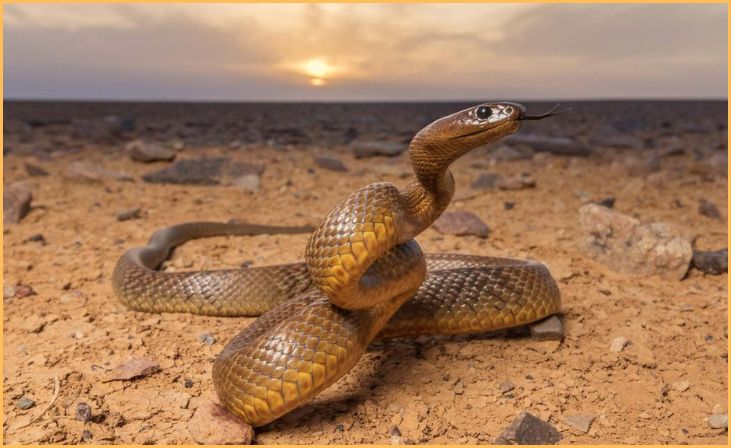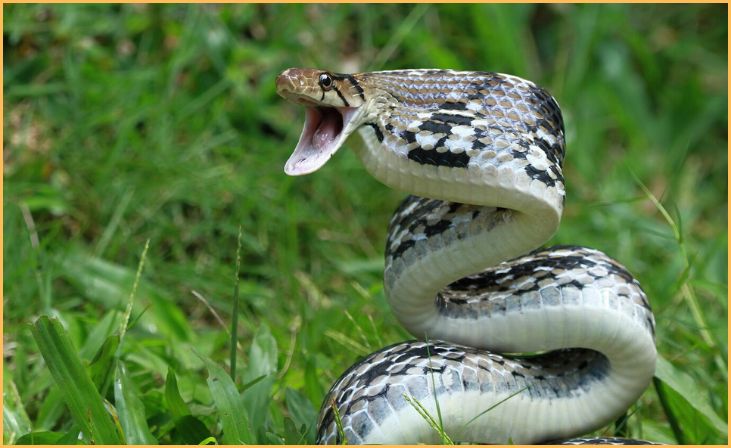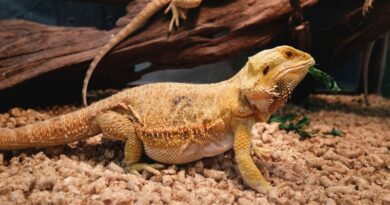Embark on a journey into the intriguing realm of serpentine danger with our meticulously curated list of the “Top 10 Deadliest Snakes.” Unveiling the world’s most lethal reptiles, this blog offers a comprehensive guide for nature enthusiasts, adventurers, and anyone seeking knowledge about these venomous creatures. From the swift and lethal inland taipan to the iconic king cobra, we delve into the fascinating world of serpents, exploring their habitats, behaviors, and the potent venom that makes them the most formidable predators in the wild. Join us as we unravel the mysteries behind these deadly snakes and gain a deeper understanding of the intricate balance between fear and fascination.
10 of the Deadliest Snakes
Inland Taipan (Oxyuranus microlepidotus)

Known as the “fierce snake,” the Inland Taipan holds the title of the world’s deadliest serpent. Inhabiting the arid regions of Australia, this highly elusive species boasts a venom that is incredibly potent, containing a lethal combination of neurotoxins. Despite its fearsome reputation, encounters with humans are rare due to its secretive nature. The Inland Taipan’s venom can cause paralysis and organ failure, making it a formidable predator in the wild.
Also Read: Perfect Name for Your Border Collie Pup
Black Mamba (Dendroaspis polylepis)
Revered as one of Africa’s most feared snakes, the Black Mamba is renowned for its speed and aggression. Found in savannas and rocky hills, it possesses a potent combination of neurotoxins and cardiotoxins. Capable of reaching speeds up to 12 miles per hour, the Black Mamba is a highly efficient predator. Its bite can lead to rapid respiratory failure, emphasizing the importance of caution and respect when encountering this deadly serpent.
Coastal Taipan (Oxyuranus scutellatus)
Endemic to northern Australia, the Coastal Taipan ranks among the deadliest snakes globally. With a venom that contains potent neurotoxins, it can cause paralysis and respiratory failure. Despite its aggressive nature when threatened, it often inhabits remote areas, reducing the likelihood of human encounters. The Coastal Taipan’s swift strikes and potent venom make it a formidable predator, emphasizing the importance of understanding and respecting its habitat.
Belcher’s Sea Snake (Hydrophis belcheri)
Inhabiting the waters of the Indo-Pacific region, Belcher’s Sea Snake is unique among venomous snakes for spending its entire life at sea. Possessing a venom primarily composed of neurotoxins, its bite can cause paralysis and respiratory failure. Despite its lethality, human encounters are rare due to its marine habitat. Understanding the behavior of this elusive sea snake is crucial for those navigating the waters where it resides.
Many-Banded Krait (Bungarus multicinctus)

Found in Southeast Asia, the Many-Banded Krait is recognized for its striking black-and-white banded pattern. This nocturnal snake possesses potent neurotoxins in its venom, affecting the nervous system and leading to paralysis. While generally docile, it can deliver a deadly bite if provoked. Awareness of its habitat and behavior is vital for minimizing the risk of encounters, as well as seeking prompt medical attention in the event of a bite.
Puff Adder (Bitis arietans)
Widely distributed across Africa, the Puff Adder is responsible for more fatalities on the continent than any other snake. Its ambush hunting style, coupled with potent cytotoxic venom, makes it a significant threat to humans. Often found in grasslands and savannas, the Puff Adder’s excellent camouflage and tendency to remain motionless contribute to its danger. Understanding its habitat and employing caution in snake-prone areas are crucial for minimizing the risk of encounters.
Russell’s Viper (Daboia russelii)
Inhabiting a vast range from the Indian subcontinent to Southeast Asia, Russell’s Viper is responsible for a considerable number of snakebite fatalities. With a venom containing hemotoxins and cytotoxins, its bite can lead to severe internal bleeding and tissue damage. The snake’s aggressive nature and adaptability to various habitats underscore the importance of understanding its behavior to reduce the risk of encounters.
Saw-Scaled Viper (Echis carinatus)
Thriving in arid regions across Africa, the Middle East, and the Indian subcontinent, the Saw-Scaled Viper is known for its distinctive scale pattern and irritable disposition. Its venom, rich in cytotoxins, can cause localized tissue damage and systemic effects. The snake’s small size and ability to produce a characteristic hissing sound as a warning make it a potential threat in areas where humans and snakes coexist.
Philippine Cobra (Naja philippinensis)
Endemic to the Philippines, this highly venomous cobra is known for its potent neurotoxic venom. The Philippine Cobra’s bite can lead to respiratory failure and, if not treated promptly, can be fatal. Despite its dangerous nature, it plays a vital role in controlling rodent populations in its natural habitat. Awareness of its presence and appropriate precautions are essential for those living in or visiting regions where this cobra is found.
Also Read:- Best Exercises That Your Puppy Needs
King Cobra (Ophiophagus hannah)

Revered as the longest venomous snake, the King Cobra is found in forests across Southeast Asia. Despite its fearsome reputation, it is generally shy and avoids human contact. Possessing potent neurotoxic venom, a bite can lead to respiratory failure. Conservation efforts are crucial to ensure the survival of this iconic species and to maintain the delicate ecological balance in the habitats it inhabits. Understanding the behavior of the King Cobra is essential for promoting coexistence in its natural environment.
Conclusion
In the tapestry of nature, the “Top 10 Deadliest Snakes” stand as awe-inspiring predators, each contributing to the delicate balance of ecosystems worldwide. As we conclude this journey into the serpentine world, remember that knowledge is the key to coexistence. By understanding and respecting these creatures, we can foster a safer and more harmonious relationship with the wild. From the elusive black mamba to the enigmatic bushmaster, let this exploration of deadly serpents be a testament to the wonders and perils of the natural world.
FAQs
The inland taipan, also known as the “fierce snake,” holds the title of the deadliest snake globally, boasting a venom more potent than any other serpent.
To minimize the risk of snake encounters, stay on well-trodden paths, wear appropriate footwear, and be cautious when reaching into areas where snakes may hide. In snake-prone regions, familiarize yourself with local species and their habitats.







